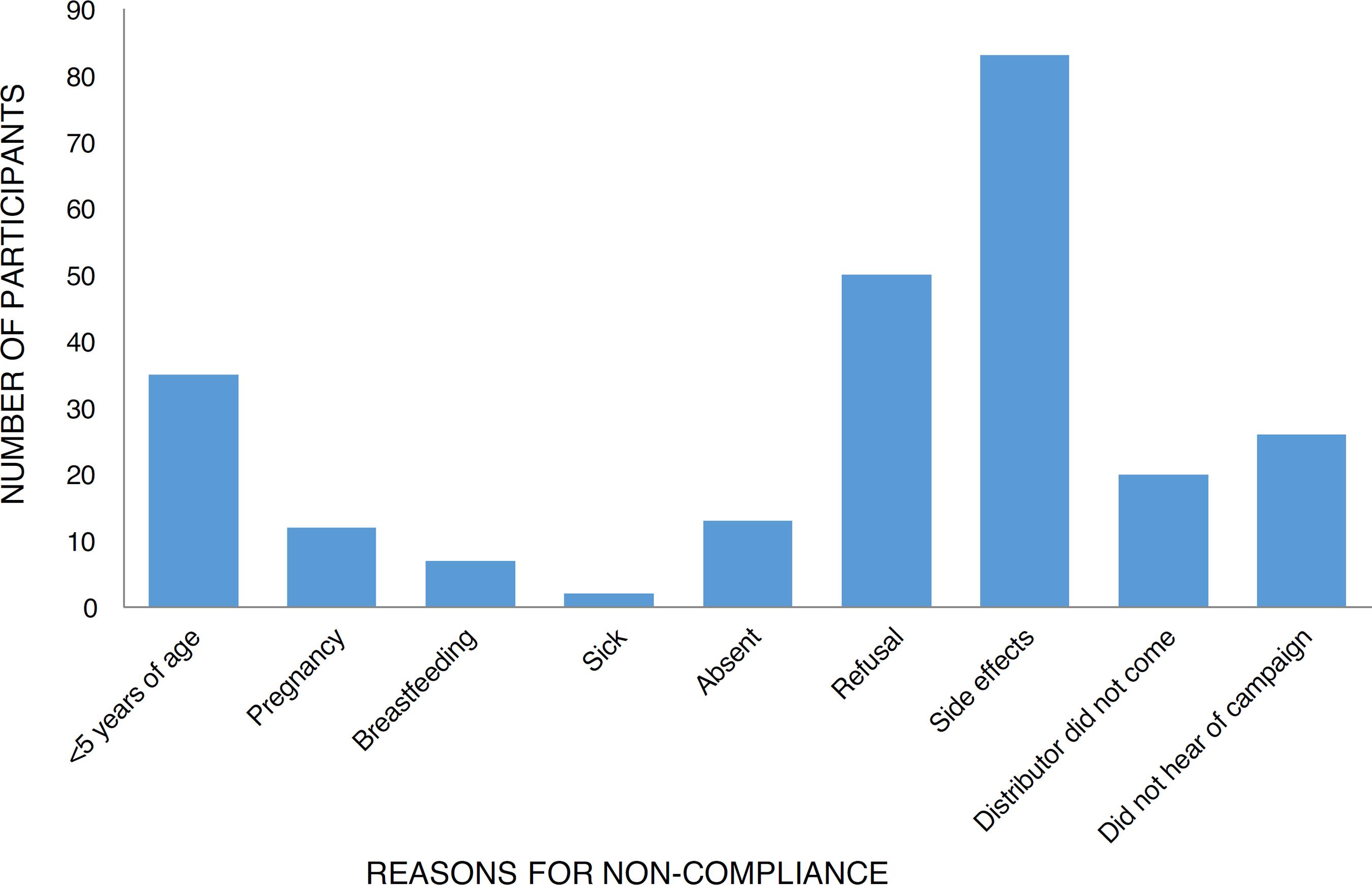ABSTRACT
Background:
Studies related to infectivity status of insect vectors are seen as necessities in understanding the epidemiology of vector-borne diseases and planning effective control measures. This study assessed the infectivity ofSimulium damnosum s.l. around Owena River as well as evaluated therapeutic coverage of Ivermectin distribution in the area.
Method:
Human landing sampling method was used to collect adult flies on human attractants from 07:00 to 18:00 for two consecutive days a month for three months (July 2016 - September 2016). Parity assessment was conducted to determine the age of fly populations. Parous flies were further dissected to detect the presence or absence ofOnchocerca larvae. Biting rates and transmission potentials were calculated using standard methods. A quantitative survey was carried out to determine the therapeutic coverage and compliance to ivermectin treatment for the control of Onchocerciasis in the study area using standard household coverage questionnaires.
Results:
A total of 914 adult female flies were collected during the study period. The daily biting rate (DBR) varied from 146 fly per man day (FMD) in July to 162.5 FMD in August. The monthly biting rate (MBR) was lowest in September (2170 bites per man per month) but highest in August (3358.3 bites per man per month). MBD ranged from 13.23 fly per man hour (FMH) in July to 14.77 FMH in August. The results indicated that the majority of the flies collected at the sampling points were nulliparous [685 (74.95%)] while others were parous [229 (25.05%)]. The biting activity of the flies showed a marked decrease in population in August compared to July which later increased in September. Infection rates varied from 2 (0.7%) in July to 7 (2.2%) in August while the infectivity rate during the study ranged from zero (July and September) to 3 (1.0%) in August.
Conclusion:
Despite the years of treatment of onchocerciasis in Owena community, there were still some infective flies capable of transmitting O. volvolus. This could be due to the low rate of therapeutic coverage as a result of non-compliance in the community for various reasons earlier stated.
Keywords:
Infectivity; Simuliumdistribution; Ivermectin; Owena dam


